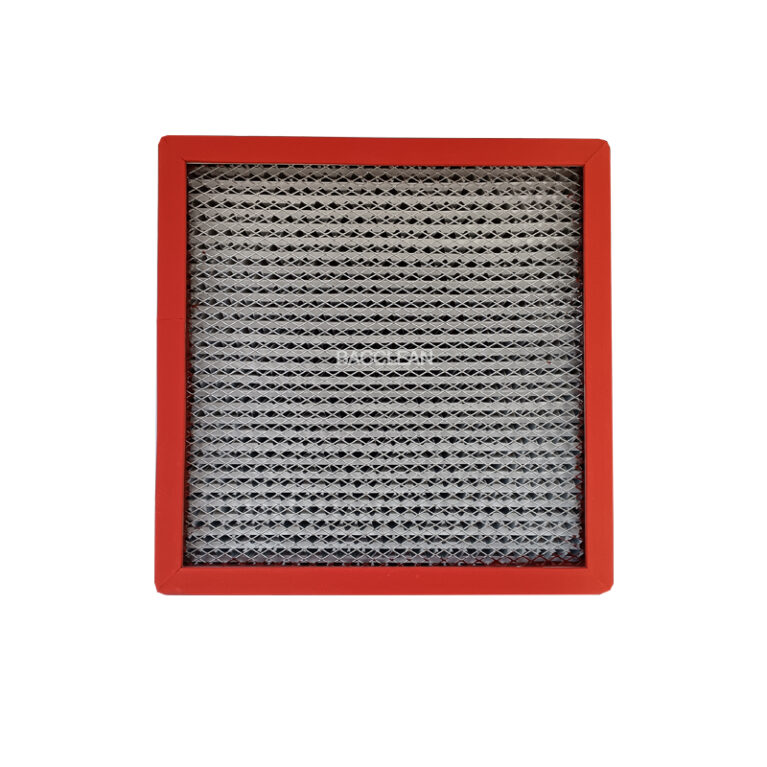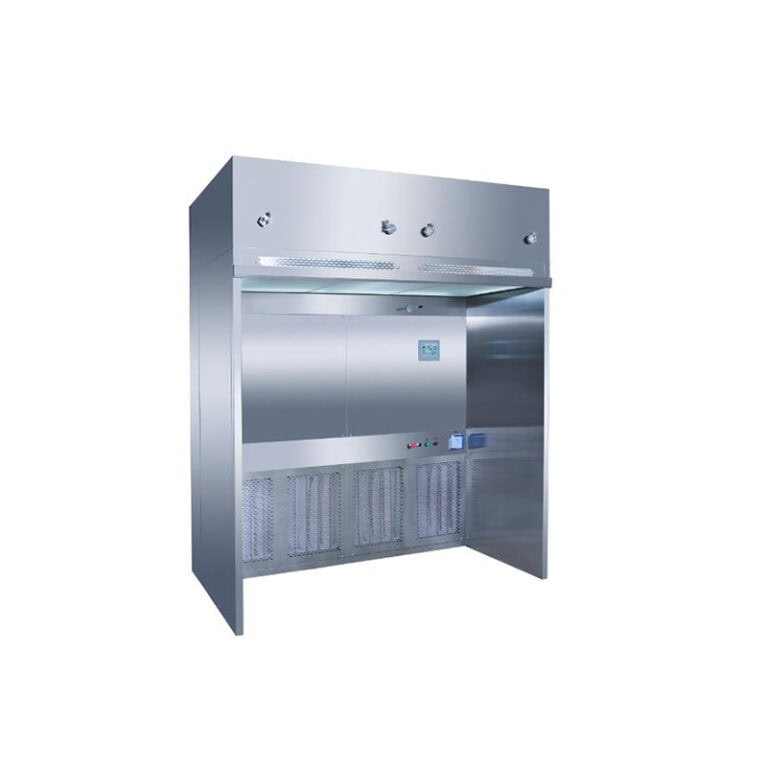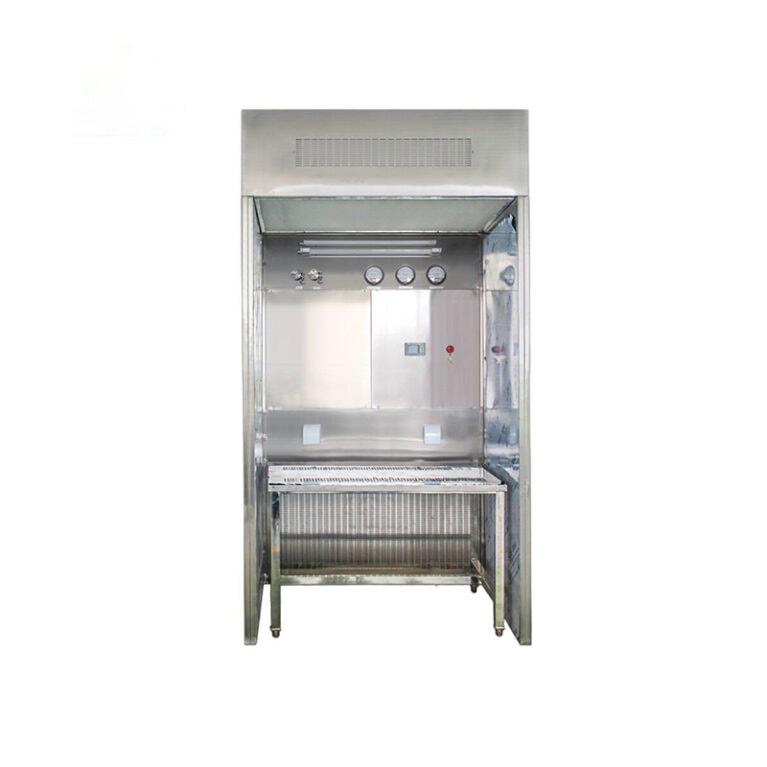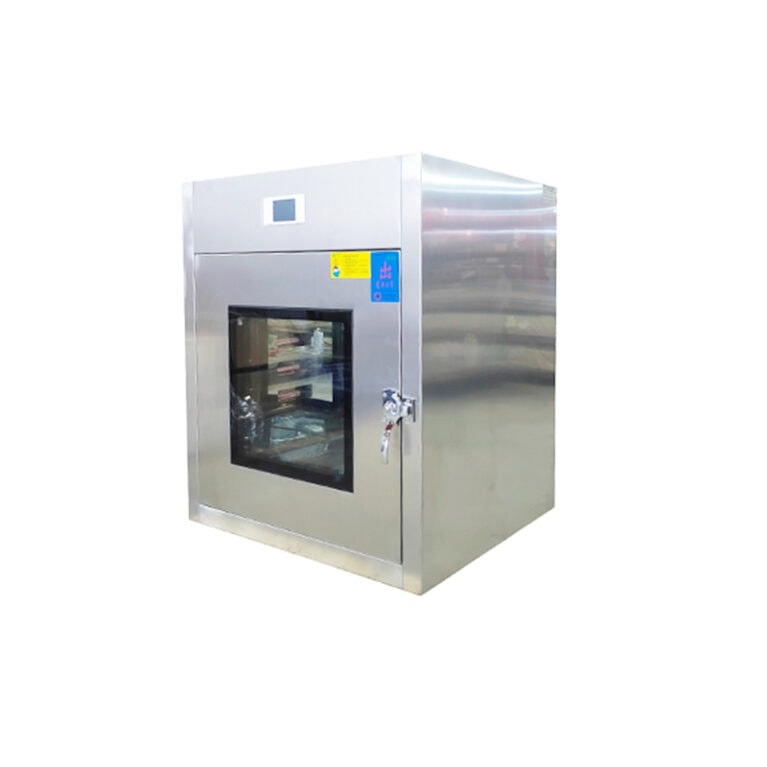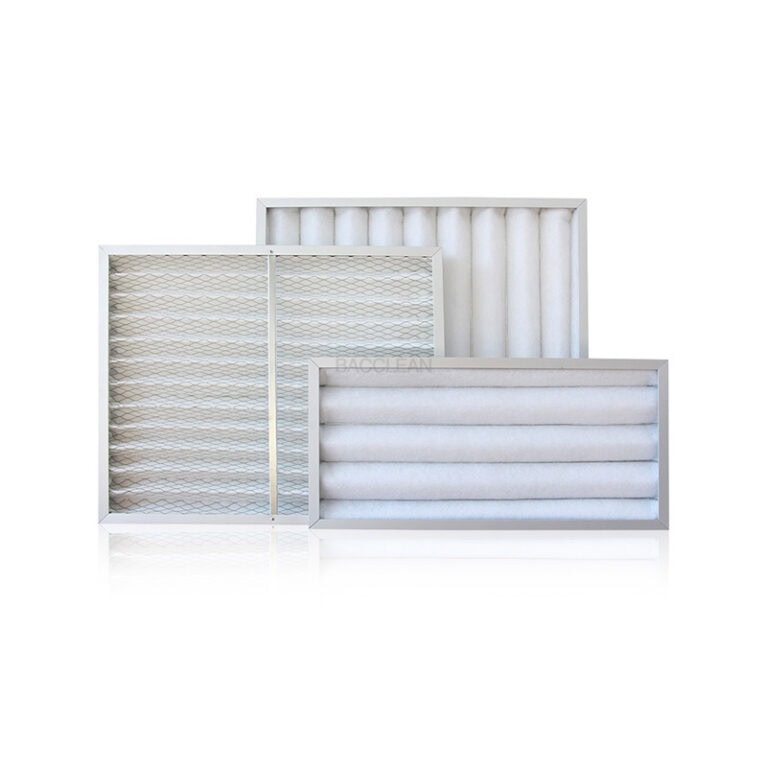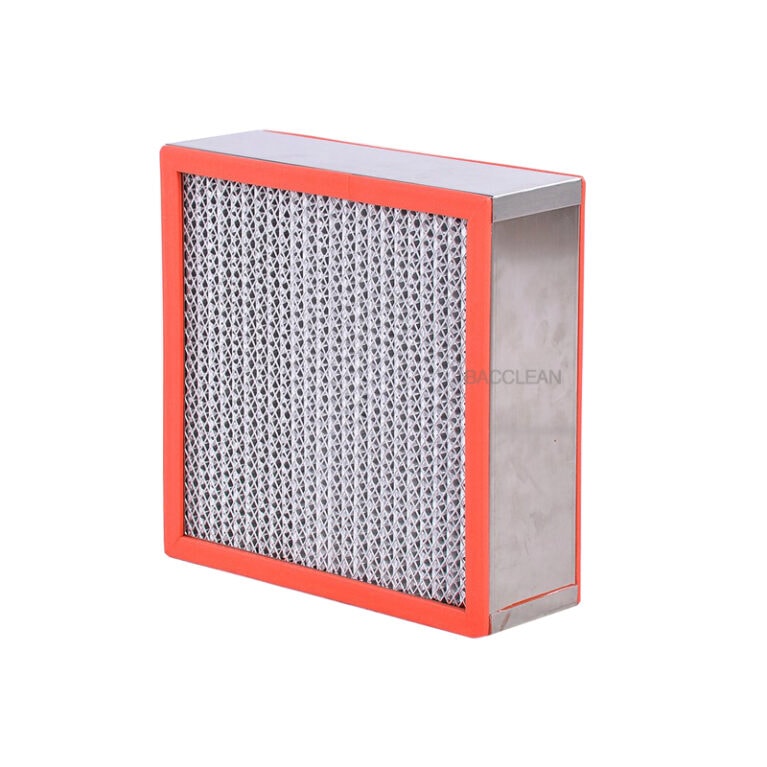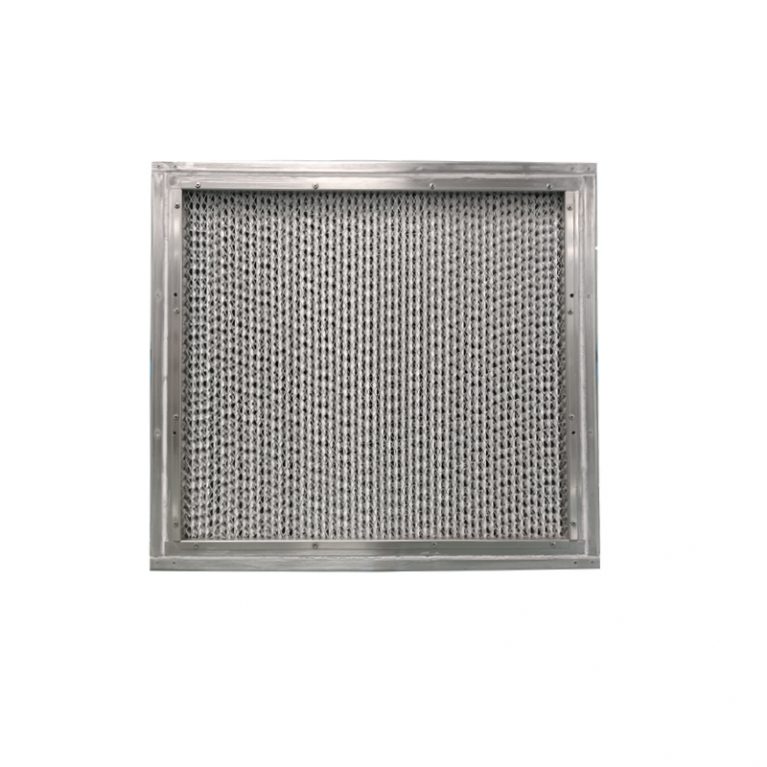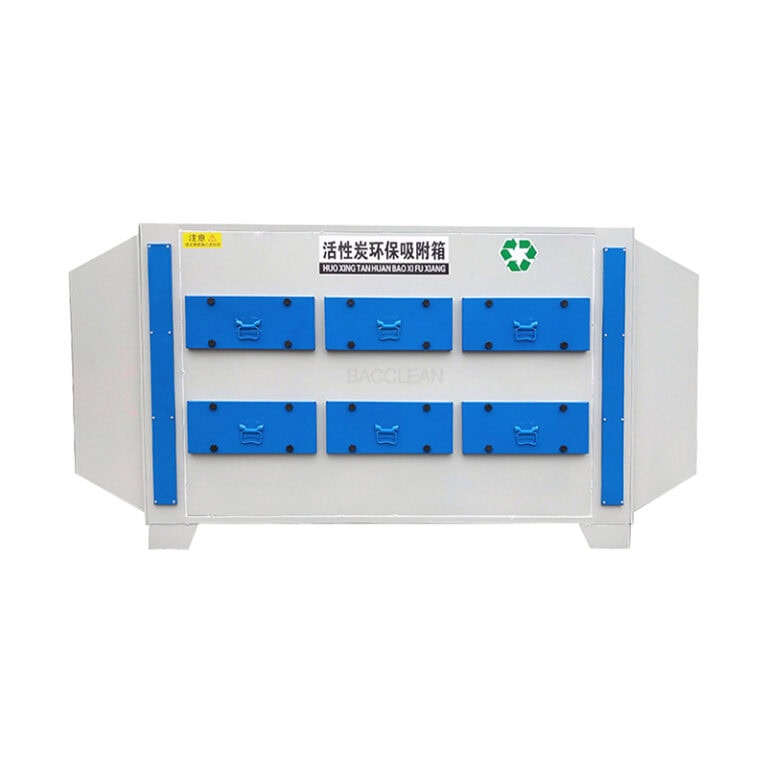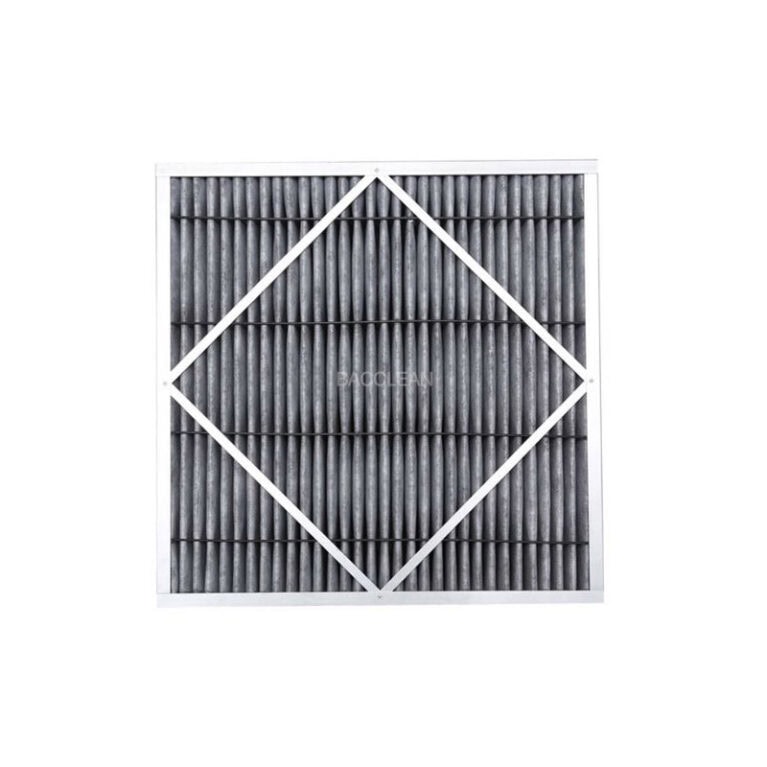Excessive noise from the fan filter unit (FFU) can affect the comfort of the clean room environment, the stability of equipment and the health of personnel. To solve the problem, it is necessary to start from the noise sources (such as fan operation, air flow disturbance, structural vibration, etc.), take targeted measures in combination with the scene requirements, and at the same time avoid affecting the filtration efficiency and air volume performance. The following are the specific solutions
1. Optimize the equipment itself: Reduce noise from the source
The core noise sources of FFU are the fan and the movement of the airflow. Noise generation can be directly reduced through structural improvements of the equipment.
1. Replace the type of low-noise fan
Give priority to brushless DC fans Compared with traditional AC centrifugal fans, brushless DC fans adopt electronic commutation technology, featuring low mechanical friction and electromagnetic noise. Under the same air volume, the noise can be reduced by 5 to 10dB (A) (for example, from 65dB (A) to 55 to 60dB (A)), and they support precise variable frequency speed regulation. It can reduce the noise of airflow turbulence by lowering the wind speed (suitable for low-noise scenarios such as medicine and laboratories).
Select low-noise impeller design: The blade shape of the fan impeller (such as backward-curved blades), Angle (to reduce airflow impact), and surface smoothness will affect aerodynamic noise. For instance, arc-shaped blades cause less airflow disturbance than straight blades, and the noise can be reduced by 3 to 5dB (A). Fans with such optimized designs should be given priority.
2. Improve the shock absorption and sealing of the fan and the casing
Install shock absorption components: Install rubber shock absorption pads (with A hardness of 50 to 60 Shore A) or spring shock absorbers between the fan and the FFU housing to reduce the transmission of mechanical vibration to the housing (vibration noise can be reduced by 4 to 6dB (A)). Please ensure that the shock-absorbing pads are evenly stressed to avoid secondary vibration caused by skewed installation.
Optimize the shell structure: Select an FFU shell made of damping materials (such as butyl rubber composite plates). Damping materials can absorb vibration energy and reduce resonance noise (especially low-frequency noise, which can be reduced by 2 to 3dB (A)). At the same time, ensure that the shell is tightly sealed to prevent the airflow from leaking through the gaps and generating turbulent noise.
Ii. Optimize installation and layout: Reduce noise transmission and superposition
Improper installation can amplify noise (such as resonance and air flow short circuit), while a reasonable layout can reduce the noise superposition effect.
Avoid structural resonance
Check the installation flatness: When installing the FFU, it is necessary to ensure that the connection with the ceiling keel or bracket is flat. If there is an inclination (>1°), the fan will generate additional vibration and noise due to the shift of the center of gravity during operation. It can be calibrated with a level and fixed with adjustable bolts to ensure a tight fit between the shell and the installation surface.
Isolated rigid connection: If the FFU is installed on A metal bracket, insulating and shock-absorbing pads (such as silicone pads) should be added at the contact points to prevent vibration transmission caused by rigid metal contact (especially when multiple FFUs are connected in parallel, it can reduce resonant superimposed noise by 3 to 5dB (A)).
2. Optimize the airflow path to reduce turbulent noise
Ensure smooth air intake: If the FFU air intake is blocked (such as pipelines or lamps inside the ceiling), it will cause air flow disorder and generate “whistling” noise (high-frequency noise, up to 65 to 70dB (A)). At least 300mm of air intake space should be reserved, or a streamlined air deflector should be installed at the air intake to guide the airflow into the fan smoothly.
Balanced air outlet wind speed: If the air outlet filter is not installed flat (such as with lifted edges), it will cause local wind speed to be too high (>0.5m/s), generating turbulent noise. It is necessary to ensure that the filter screen is tightly sealed with the air outlet frame. If necessary, a pressure strip should be used for fixation to ensure uniform air output (wind speed deviation ≤±5%).
3. Dispersed layout to reduce noise superposition
When multiple FFUs are installed centrally, the noise will increase due to the superposition effect (60dB (A) for A single unit, and it may reach 66dB (A) when four units are arranged centrally). If the cleanroom is large in area, a decentralized layout (such as uniform arrangement at intervals of 1.2 to 1.5 meters) can be adopted to reduce noise superposition through spatial dispersion. If it is necessary to arrange them in a centralized manner, sound insulation partitions (made of porous sound-absorbing materials such as centrifugal glass wool) can be installed between adjacent FFUs to reduce the transmission of lateral noise.
Iii. Adjust operating parameters: Balance air volume and noise
The noise of FFU increases significantly with the increase of air volume (for A 20% increase in air volume, the noise may rise by 6 to 8dB (A)). Reasonable adjustment of operating parameters can reduce noise while ensuring cleanliness.
1. Variable frequency speed regulation is adopted to match actual demands
Dynamic speed regulation according to cleanliness grade For instance, in A Class 1000 cleanroom, during non-production periods (such as at night), the air volume can be reduced from 0.45m/s to 0.3m/s (the minimum air volume required to maintain cleanliness), and at this time, noise can be reduced by 5 to 8dB (A) (for example, from 62dB (A) to 54 to 57dB (A)). It is necessary to be equipped with a frequency conversion controller (supporting 0-10V or PWM signal speed regulation) to achieve stepless adjustment of air volume.
Avoid long-term full-load operation The FFU generates the highest noise at 100% air volume. If the process permits (such as in A regular electronic assembly workshop), it can be set to operate at 70% to 80% air volume (reducing noise by 4 to 6dB (A)). At the same time, the insufficient air volume of a single FFU can be compensated for by increasing the number of FFUs (for example, changing from 10 units operating at full load to 12 units operating at 70% air volume). The total air volume remains unchanged but the noise is lower.
2. Control the noise of the static pressure box and the air duct
If the FFU is used in conjunction with a static pressure box, it is necessary to ensure the stability of the airflow inside the static pressure box.
Insufficient volume of the static pressure box will cause the air flow velocity to be too high (>2m/s), generating turbulent noise. It is necessary to ensure that the clear height of the static pressure box is ≥300mm, and install deflector plates (arc-shaped design) inside to reduce the impact of the air flow.
If the FFU is connected through an air duct, the air duct elbow should adopt a large curvature radius (R≥1.5 times the diameter of the air duct) to avoid the vortex noise generated by the right-angle elbow. If necessary, sound-absorbing cotton (such as flame-retardant centrifugal glass wool, thickness ≥25mm) should be pasted inside the air duct to absorb aerodynamic noise.
Iv. Auxiliary noise reduction measures: Targeting high-frequency and environmental noise
If the above methods still fail to meet the requirements, additional measures can be taken to further reduce the noise (note that it should not affect the intake and exhaust of the FFU) :
Install a silencing device
Air inlet muffler: Installing A plate-type muffler (filled with porous sound-absorbing materials such as polyester fiber) at the FFU air inlet can reduce high-frequency aerodynamic noise (3 to 6dB (A)). The length of the muffler should be selected based on the noise frequency (short mufflers are suitable for high-frequency noise, with a length of 300 to 500mm).
Air outlet diffusion noise reduction: Install A silencing static pressure box (with micro-perforated plates) below the air outlet. Through air flow diffusion, the wind speed is reduced, and at the same time, some noise is absorbed. It is suitable for scenarios sensitive to terminal noise (such as precision instrument workshops), and can further reduce noise by 2 to 4dB (A).
2. Environmental sound insulation treatment
Ceiling sound insulation: If the FFU is installed inside the ceiling, sound insulation cotton (such as rock wool, with a thickness of 50 to 100mm) can be filled above the ceiling, and the gaps in the ceiling can be sealed to reduce the transmission of noise to the clean room.
Wall sound absorption: By covering the walls of the clean room with sound-absorbing boards (such as perforated aluminum alloy plates + sound-absorbing cotton), reflected noise can be absorbed. This is particularly suitable for scenarios where multiple FFUs are densely arranged, and it can reduce the overall environmental noise by 3 to 5dB (A).
V. Regular Maintenance: Reduce noise increase caused by wear and tear
After long-term operation, the wear and dust accumulation of the fan components will lead to increased noise, which needs to be alleviated through maintenance
Clean the fan impeller: Dust accumulation on the impeller can disrupt the stability of the airflow, leading to increased noise (especially high-frequency noise). The fan should be shut down for cleaning every 3 to 6 months (by blowing with compressed air or wiping with a soft cloth).
Inspect the motor and bearings: Wear of the motor bearings can cause mechanical abnormal noises (such as a “buzzing” sound), and grease should be added regularly (once every 6 to 12 months). When the wear is severe, replace the bearings or the motor.
Tighten loose parts: Loose connecting bolts between the fan and the casing, filter screen pressure strips, etc. will cause vibration and noise. They need to be inspected and tightened monthly.
Precautions
All noise reduction measures must be based on the premise of not reducing the filtration efficiency and the uniformity of air volume. For example: sound-absorbing materials must not block the air inlet (at least 80% of the ventilation area must be reserved), and shock-absorbing pads must not be overly compressed to cause deformation of the shell (compression ≤30%).
If the noise level exceeds the limit seriously (such as by more than 10dB (A)), it is recommended to prioritize the replacement with low-noise FFU models (such as brushless DC fans with full shock absorption design), rather than relying on later modifications (the effect of modifications is limited and may increase costs).
1. Optimize the equipment itself: Reduce noise from the source
The core noise sources of FFU are the fan and the movement of the airflow. Noise generation can be directly reduced through structural improvements of the equipment.
1. Replace the type of low-noise fan
Give priority to brushless DC fans Compared with traditional AC centrifugal fans, brushless DC fans adopt electronic commutation technology, featuring low mechanical friction and electromagnetic noise. Under the same air volume, the noise can be reduced by 5 to 10dB (A) (for example, from 65dB (A) to 55 to 60dB (A)), and they support precise variable frequency speed regulation. It can reduce the noise of airflow turbulence by lowering the wind speed (suitable for low-noise scenarios such as medicine and laboratories).
Select low-noise impeller design: The blade shape of the fan impeller (such as backward-curved blades), Angle (to reduce airflow impact), and surface smoothness will affect aerodynamic noise. For instance, arc-shaped blades cause less airflow disturbance than straight blades, and the noise can be reduced by 3 to 5dB (A). Fans with such optimized designs should be given priority.
2. Improve the shock absorption and sealing of the fan and the casing
Install shock absorption components: Install rubber shock absorption pads (with A hardness of 50 to 60 Shore A) or spring shock absorbers between the fan and the FFU housing to reduce the transmission of mechanical vibration to the housing (vibration noise can be reduced by 4 to 6dB (A)). Please ensure that the shock-absorbing pads are evenly stressed to avoid secondary vibration caused by skewed installation.
Optimize the shell structure: Select an FFU shell made of damping materials (such as butyl rubber composite plates). Damping materials can absorb vibration energy and reduce resonance noise (especially low-frequency noise, which can be reduced by 2 to 3dB (A)). At the same time, ensure that the shell is tightly sealed to prevent the airflow from leaking through the gaps and generating turbulent noise.
Ii. Optimize installation and layout: Reduce noise transmission and superposition
Improper installation can amplify noise (such as resonance and air flow short circuit), while a reasonable layout can reduce the noise superposition effect.
Avoid structural resonance
Check the installation flatness: When installing the FFU, it is necessary to ensure that the connection with the ceiling keel or bracket is flat. If there is an inclination (>1°), the fan will generate additional vibration and noise due to the shift of the center of gravity during operation. It can be calibrated with a level and fixed with adjustable bolts to ensure a tight fit between the shell and the installation surface.
Isolated rigid connection: If the FFU is installed on A metal bracket, insulating and shock-absorbing pads (such as silicone pads) should be added at the contact points to prevent vibration transmission caused by rigid metal contact (especially when multiple FFUs are connected in parallel, it can reduce resonant superimposed noise by 3 to 5dB (A)).
2. Optimize the airflow path to reduce turbulent noise
Ensure smooth air intake: If the FFU air intake is blocked (such as pipelines or lamps inside the ceiling), it will cause air flow disorder and generate “whistling” noise (high-frequency noise, up to 65 to 70dB (A)). At least 300mm of air intake space should be reserved, or a streamlined air deflector should be installed at the air intake to guide the airflow into the fan smoothly.
Balanced air outlet wind speed: If the air outlet filter is not installed flat (such as with lifted edges), it will cause local wind speed to be too high (>0.5m/s), generating turbulent noise. It is necessary to ensure that the filter screen is tightly sealed with the air outlet frame. If necessary, a pressure strip should be used for fixation to ensure uniform air output (wind speed deviation ≤±5%).
3. Dispersed layout to reduce noise superposition
When multiple FFUs are installed centrally, the noise will increase due to the superposition effect (60dB (A) for A single unit, and it may reach 66dB (A) when four units are arranged centrally). If the cleanroom is large in area, a decentralized layout (such as uniform arrangement at intervals of 1.2 to 1.5 meters) can be adopted to reduce noise superposition through spatial dispersion. If it is necessary to arrange them in a centralized manner, sound insulation partitions (made of porous sound-absorbing materials such as centrifugal glass wool) can be installed between adjacent FFUs to reduce the transmission of lateral noise.
Iii. Adjust operating parameters: Balance air volume and noise
The noise of FFU increases significantly with the increase of air volume (for A 20% increase in air volume, the noise may rise by 6 to 8dB (A)). Reasonable adjustment of operating parameters can reduce noise while ensuring cleanliness.
1. Variable frequency speed regulation is adopted to match actual demands
Dynamic speed regulation according to cleanliness grade For instance, in A Class 1000 cleanroom, during non-production periods (such as at night), the air volume can be reduced from 0.45m/s to 0.3m/s (the minimum air volume required to maintain cleanliness), and at this time, noise can be reduced by 5 to 8dB (A) (for example, from 62dB (A) to 54 to 57dB (A)). It is necessary to be equipped with a frequency conversion controller (supporting 0-10V or PWM signal speed regulation) to achieve stepless adjustment of air volume.
Avoid long-term full-load operation The FFU generates the highest noise at 100% air volume. If the process permits (such as in A regular electronic assembly workshop), it can be set to operate at 70% to 80% air volume (reducing noise by 4 to 6dB (A)). At the same time, the insufficient air volume of a single FFU can be compensated for by increasing the number of FFUs (for example, changing from 10 units operating at full load to 12 units operating at 70% air volume). The total air volume remains unchanged but the noise is lower.
2. Control the noise of the static pressure box and the air duct
If the FFU is used in conjunction with a static pressure box, it is necessary to ensure the stability of the airflow inside the static pressure box.
Insufficient volume of the static pressure box will cause the air flow velocity to be too high (>2m/s), generating turbulent noise. It is necessary to ensure that the clear height of the static pressure box is ≥300mm, and install deflector plates (arc-shaped design) inside to reduce the impact of the air flow.
If the FFU is connected through an air duct, the air duct elbow should adopt a large curvature radius (R≥1.5 times the diameter of the air duct) to avoid the vortex noise generated by the right-angle elbow. If necessary, sound-absorbing cotton (such as flame-retardant centrifugal glass wool, thickness ≥25mm) should be pasted inside the air duct to absorb aerodynamic noise.
Iv. Auxiliary noise reduction measures: Targeting high-frequency and environmental noise
If the above methods still fail to meet the requirements, additional measures can be taken to further reduce the noise (note that it should not affect the intake and exhaust of the FFU) :
Install a silencing device
Air inlet muffler: Installing A plate-type muffler (filled with porous sound-absorbing materials such as polyester fiber) at the FFU air inlet can reduce high-frequency aerodynamic noise (3 to 6dB (A)). The length of the muffler should be selected based on the noise frequency (short mufflers are suitable for high-frequency noise, with a length of 300 to 500mm).
Air outlet diffusion noise reduction: Install A silencing static pressure box (with micro-perforated plates) below the air outlet. Through air flow diffusion, the wind speed is reduced, and at the same time, some noise is absorbed. It is suitable for scenarios sensitive to terminal noise (such as precision instrument workshops), and can further reduce noise by 2 to 4dB (A).
2. Environmental sound insulation treatment
Ceiling sound insulation: If the FFU is installed inside the ceiling, sound insulation cotton (such as rock wool, with a thickness of 50 to 100mm) can be filled above the ceiling, and the gaps in the ceiling can be sealed to reduce the transmission of noise to the clean room.
Wall sound absorption: By covering the walls of the clean room with sound-absorbing boards (such as perforated aluminum alloy plates + sound-absorbing cotton), reflected noise can be absorbed. This is particularly suitable for scenarios where multiple FFUs are densely arranged, and it can reduce the overall environmental noise by 3 to 5dB (A).
V. Regular Maintenance: Reduce noise increase caused by wear and tear
After long-term operation, the wear and dust accumulation of the fan components will lead to increased noise, which needs to be alleviated through maintenance
Clean the fan impeller: Dust accumulation on the impeller can disrupt the stability of the airflow, leading to increased noise (especially high-frequency noise). The fan should be shut down for cleaning every 3 to 6 months (by blowing with compressed air or wiping with a soft cloth).
Inspect the motor and bearings: Wear of the motor bearings can cause mechanical abnormal noises (such as a “buzzing” sound), and grease should be added regularly (once every 6 to 12 months). When the wear is severe, replace the bearings or the motor.
Tighten loose parts: Loose connecting bolts between the fan and the casing, filter screen pressure strips, etc. will cause vibration and noise. They need to be inspected and tightened monthly.
Precautions
All noise reduction measures must be based on the premise of not reducing the filtration efficiency and the uniformity of air volume. For example: sound-absorbing materials must not block the air inlet (at least 80% of the ventilation area must be reserved), and shock-absorbing pads must not be overly compressed to cause deformation of the shell (compression ≤30%).
If the noise level exceeds the limit seriously (such as by more than 10dB (A)), it is recommended to prioritize the replacement with low-noise FFU models (such as brushless DC fans with full shock absorption design), rather than relying on later modifications (the effect of modifications is limited and may increase costs).
By the above methods, the noise of FFU can be controlled within the target range according to the noise requirements of the scene and the cost budget (for example, ≤60dB (A) in the pharmaceutical workshop and ≤55dB (A) in the laboratory), while ensuring the core functions of the clean room.

